Today's Birthdays in Music: January 17 (G. Weir, Morawetz)
Wikipedia
Gillian Weir's website
1917 - Oskar Morawetz, Světlà nad Sàzavou. Czechoslovakia; composer
Labels: birthdays, composer, Gillian Weir, organ, Oskar Morawetz
Labels: birthdays, composer, Gillian Weir, organ, Oskar Morawetz
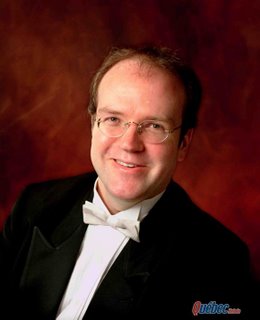 Photo: conductor Bernard Labadie
Photo: conductor Bernard LabadieLabels: Magic Flute, This Week in Toronto, Toronto Symphony
Labels: birthdays, Marilyn Horne, Pilar Lorengar, singer
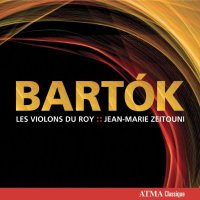 Les Violons du Roy / Jean-Marie Zeitouni
Les Violons du Roy / Jean-Marie ZeitouniLabels: bartok, CDs, français, product_review

Classical Travels with Paul E. Robinson
There is nothing quite like the thrill of seeing a great piano virtuoso in action with a big orchestra. Hands a blur at the keyboard, showers of notes played at blinding speed, the Steinway grand all but demolished under the onslaught while the conductor whips the orchestra into a frenzy. Wonderful!
Most of the great virtuoso vehicles – by Liszt, Tchaikovsky and Rachmaninov - were composed in the late nineteenth and early twentieth centuries and have been exciting audiences ever since. There are, however, other piano concertos from this period that are less flashy, but well worth a hearing. Dvořák’s piano concerto of 1876 is just such a piece. I have had a special affection for this fine work for many years and I was delighted that pianist Garrick Ohlsson and conductor Peter Bay decided to present it this season with the Austin Symphony at the Long Center.
Ohlsson Brings Flawless Touch & Temperament to Rare Masterpiece
As a young man, Ohlsson won the prestigious Chopin International Piano Competition in Warsaw in 1970. He went on to establish himself as one of the foremost Chopin players of his generation. With this kind of musical pedigree, he was just the man to do justice to Dvořák’s Piano Concerto in G minor, Op. 33.
Op. 33 is a piece for consummate musicians. It calls for beauty of sound and the most natural sense of rubato. In other words, it is Chopinesque in its piano writing. Any pianist who approaches it with hammer and tongs will make a hash of it, and might better leave it alone. There is drama in the score, and deep romantic temperament; but again, its special beauty is apt to be destroyed if the passion is overdone.
One of the great moments for me is the opening of the slow movement – a solo horn with soft string accompaniment, playing a haunting melody then picked up by the piano. Nothing much to it, except the totally unexpected B major chord that intrudes in the key of D major. It reminds me also of the inspired harmonic chemistry to be found in the great soprano aria “O silver moon” from Dvořák’s opera Rusalka. The piano concerto has several moments of this quality, and if you like Dvořák’s Slavonic Dances, you’ll find more of the same here, especially in the last movement.
Ohlsson gave one of the finest performances I ever expect to hear of this lovely work and Peter Bay and the ASO provided stellar accompaniment. At the height of the applause came a special treat – as an encore - Chopin’s familiar Grand Valse Brillante, played by Ohlsson with such effortless mastery that one hoped it would never end.
Dell Hall Sound Fails Conductor & Orchestra in Epic Rachmaninov!
The major orchestral offering of the evening, Rachmaninov’s epic Symphony No. 2, (1907), came after intermission. Interestingly, Dvořák and Rachmaninov were close to the same age – Dvořák was 36 and Rachmaninov 34 – when they wrote these two pieces; in short, they were both young men but well-established as important composers.
In the case of Rachmaninov, his first symphony was received so badly that it practically ended his career. The Second Symphony, however, was another matter. It is full of soaring melody, and structurally it hangs together far better than the First Symphony. It is, nonetheless, a massive, sprawling score and much of the music is dark and melancholy. Unlike the Dvořák Piano Concerto, it calls for a large orchestra and the biggest possible sound.
Unfortunately, while Peter Bay had added a few extra double basses and had the full complement of brass and percussion that the score requires, the Michael and Susan Dell Hall at the Long Center simply refused to cooperate.
Rachmaninov’s Symphony No. 2 requires a depth of sound that sets the floor shaking and gives you the feeling of being punched in the gut. Nothing like that sound reached me in my seat about two-thirds of the way back on the ground floor. I don’t doubt for a moment that the ASO is capable of producing a full rich sound, but I am concerned that we may never hear it in this hall.
It so happens that the very next night I was sitting in a similar location in the Myerson Symphony Center in Dallas. The orchestral sound I heard there was exactly what was missing in
Let me emphasize that
Finding the Right Mix No Easy Matter
It might be worthwhile for Bay and the ASO – if they have not already done so - to experiment with different orchestral seating arrangements, various types of risers and baffles, or moving at least some of the musicians out in front of the proscenium to see if any of these changes improve the sound.
There is another way of looking at the problem. The ASO might think about what repertoire avoids the hall’s deficiencies, and instead plays to its strengths. In my experience, the hall does not deal well with big, romantic repertoire. There is not enough resonance and not enough of the sound projects into the hall. On the other hand, the hall is generally flattering to soft music and to music with a lighter texture. Mozart symphonies and concertos, for example, might work very well.
Unfortunately, the heart of the repertoire and the music that appeals to a wider audience is – you guessed it – the big, romantic stuff.
Paul E. Robinson is the author of Herbert von Karajan: the Maestro as Superstar; Sir Georg Solti: his Life and Music, and Stokowski (Spring 2009), all available at http://www.amazon.com) For more about Paul E. Robinson please visit his website.
Labels: Antonín Dvořák, Austin Symphony Orchestra, classical music, Garrick Ohlssohn, Peter Bay, Rachmaninov
Labels: birthdays, Malcolm Frager, piano
 Nathan Berg, bass baritone; Julius Drake, piano
Nathan Berg, bass baritone; Julius Drake, pianoLabels: CDs, français, lieder, Nathan Berg, product_review
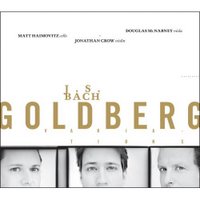 Jonathan Crow, violon; Douglas McNabney, alto; Matt Haimovitz, violoncelle
Jonathan Crow, violon; Douglas McNabney, alto; Matt Haimovitz, violoncelleLabels: bach, CDs, français, goldberg variations, jonathan crow, product_review
Labels: Albert Schweitzer, Ben Heppner, birthdays, musician, philosopher, physician, singer, theologian
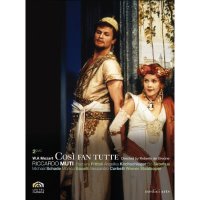 Barbara Frittoli (Fiordigili), Angelika Kirchschlager, Bo Skovhus (Guglielmo), Michael Schade (Ferrando), Monica Bacelli (Despina), Allesandro Corbelli (Don Alfonso)
Barbara Frittoli (Fiordigili), Angelika Kirchschlager, Bo Skovhus (Guglielmo), Michael Schade (Ferrando), Monica Bacelli (Despina), Allesandro Corbelli (Don Alfonso)Labels: Cosi fan tutte, dvd, mozart, product_review, Riccardo Muti
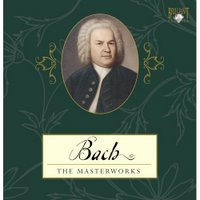 Artistes variés
Artistes variésLabels: bach, CDs, français, masterworks, product_review
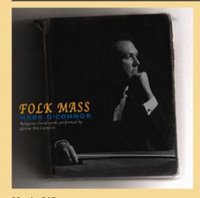 Mark O’Connor, violon ; Elizabeth C. Patterson ; Gloriæ Dei Cantores
Mark O’Connor, violon ; Elizabeth C. Patterson ; Gloriæ Dei CantoresLabels: CDs, français, product_review, violin
Labels: birthdays, Juan Diego Flórez, singer
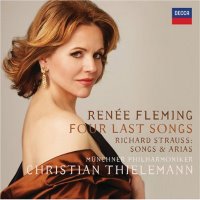 Renée Fleming, soprano; Münichen Philharmoniker / Christian Thielemann
Renée Fleming, soprano; Münichen Philharmoniker / Christian ThielemannLabels: CDs, english, Four Last Songs, product_review, Renee Fleming, Richard Strauss
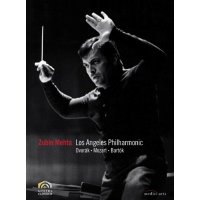 Los Angeles Philharmonic / Zubin Mehta
Los Angeles Philharmonic / Zubin MehtaLabels: bartok, dvd, Dvorak, english, Los Angeles Philharmonic, mozart, product_review, Zubin Mehta
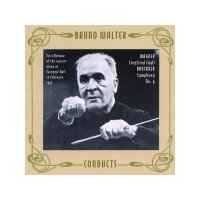 The Philharmonic-Symphony Orchestra / Bruno Walter
The Philharmonic-Symphony Orchestra / Bruno WalterLabels: bruckner, Bruno Walter, CDs, français, product_review
Labels: birthdays, composer, Ermanno Wolf-Ferrari
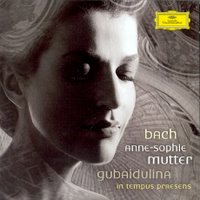 Anne-Sophie Mutter, violin; London Symphony Orchestra / Valery Gergiev
Anne-Sophie Mutter, violin; London Symphony Orchestra / Valery GergievLabels: Anne-Sophie Mutter, bach, CDs, français, product_review
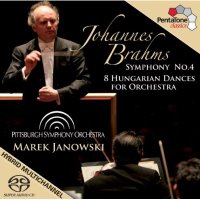 Pittsburgh Symphony Orchestra / Marek Janowski
Pittsburgh Symphony Orchestra / Marek JanowskiLabels: brahms, CDs, english, product_review
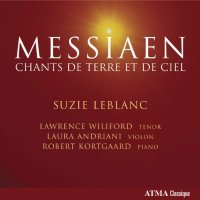 Suzie LeBlanc, soprano; Lawrence Wiliford, tenor; Laura Andriani, violon; Robert Kortgaard, piano
Suzie LeBlanc, soprano; Lawrence Wiliford, tenor; Laura Andriani, violon; Robert Kortgaard, pianoLabels: CDs, english, Messiaen, product_review, Suzie LeBlanc
 Artistes variés
Artistes variésLabels: Brian Current, Canadian, CDs, français, product_review
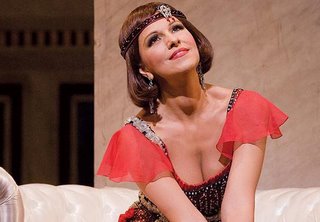 Angela Gheorghiu as Magda in Metropolitan Opera's La Rondine
Angela Gheorghiu as Magda in Metropolitan Opera's La RondineLa Rondine, the "wall flower" among Puccini's operas, has barely a tenuous hold on the fringes of standard repertoire and for good reason. Others may disagree, but to my ears, this piece marks a low ebb in the composer's creative genius. Yes, it does have its moments, particularly the showpiece "Che il bel sogno di Doretta" and the splendid concertato in the Second Act, two genuinely inspired moments. But the rest of the piece does not really represent Puccini at his best, despite an occasional perfumy melody here and there. Also problematic is the rather thin, sugary plot where there is little action, particularly in Act One. The story bears some resemblance to La traviata except less developed, with elements of Strauss's Die Fledermaus thrown in for good measure. Frankly it pales in comparison to those two, far more successful operas. True, Puccini intended to write an operetta in the great Viennese tradition, complete with opulent setting, frothy melodies - but minus the spoken dialogue. In the end, the composer reverted back to the more conventional operatic form. There is even an alternate ending (to the one performed currently at the Met) where Magda dies. But either way, the end result does not measure up to some of Puccini's greatest creations, whether as an opera or operetta. It is no wonder that it has been absent from the Met stage since the 1930s.
The raison d'etre for the current production is Romanian soprano Angela Gheorghiu. Much like the Met Thais for American prima donna Renee Fleming, a production of Rondine can be successful as a diva vehicle. Gheorghiu has a particular affinity for this opera, having recorded it a decade ago and has previously sung it on stage. The Met spared no expenses in mounting a super-lavish production by Nicolas Joel to showcase the soprano. The decor is fin-de-siecle Art Nouveau, suitably French, with lovely imitations of Tiffany glass panels mixed in with splashes of early Deco. Some of the decor reminds me so much of the Franz von Stuck house (now a museum) in Munich I visited last summer! Some may criticize the Joel production for its rather cold aesthetics but overall it's really pleasing to the eye. The period costumes are uniformly gorgeous, the ones worn by Gheorghiu are particularly lovely, although the summer dress in Act Two with its uneven hemlines aren't terribly authentic.
As to the musical side of things - Peter Gelb went in front of the curtain to announce that Ms. Gheorghiu had a bad cold but didn't want to disappoint her fans so she consented to sing. Her first phrases were low, sounding uncomfortable in the chest voice. There wasn't much time before she had to sing the big aria, and it was clear that she wasn't sufficiently warmed up for "Che il bel sogno". With the big screen HD in Sheppard Grande, one could clearly see her working hard to get the saliva going to lubricate her throat for the aria. Other than a couple of pushed notes and a lack of high pianissimo singing, she did well under the circumstances. Her acting as Magda was endearing but not overdone, unlike Fleming's excessive posturing as Thais. Roberto Alagna was in acceptable voice, a little dry in spots and his forte top notes typically went sharp, but he was clearly enjoying himself as Ruggero, savouring the chance of singing with his wife. The two exhibited a dramatic and physical freedom with each other in art that is only possible (and probable) when such freedom extends to their personal lives as well. At one point, Alagna spontaneously kissed Gheorghiu's bosom - I ask you, when was the last time you see that happen between two singers onstage?!
The second couple were well taken by Marius Brenciu (Prunier) and Lisette Oropesa, suitably as - Lisette! The 2001 Cardiff winner Brenciu has a slender voice which he uses with taste and style, refraining from pushing it beyond its limits. Oropesa, who made her Met debut as Susanna in fall 2007 replacing a very pregnant Isabel Bayrakdarian, was a delicious Lisette, acting up a storm and her soubrette tailor-made for the part of the maid. The only superannuated singer onstage was Samuel Ramey as Rambaldo. His once impressive bass isn't what it used to be, and he wobbled his way through. But given the character of Rambaldo, this kind of imperfect vocalism actually adds to the role, and Ramey did well. Marco Armiliato deserves credit for treating the lightweight score with the respect of a work many times its status.
I saw it at my theatre of choice, the Sheppard Grande in North York. The facility was late opening this time. Given that the mostly elderly opera audience has a tendency to be early, the queue waiting to get in was extremely long by noon, and I heard quite a lot of grumbling. I spoke with Greg Buller, the theatre manager, who explained that he was short-staffed that day and for safety reasons he couldn't open the facilities any earlier. The transmission in Cinema #3 was perfect except for a few seconds worth of silence at the beginning of Act Three. The cinemas were as usual well maintained and spotless, no sticky floors anywhere that I was able to find. The service at the coffee-sandwich concessions continued to be on the slow side. Given that there are usually four or even five staff members behind the counter, service should be a lot more brisk. The washrooms had attendants stationed outside to take care of any special needs should they arose - a nice touch. The next show is the encore presentation of Damnation of Faust next Saturday, and the next new presentation is Orfeo ed Euridice on January 24.
Labels: Angela Gheorghiu, La Rondine, Met in HD, Roberto Alagna
Labels: arranger, birthdays, composer, Maurice Duruflé, organist, Reinhold Glière